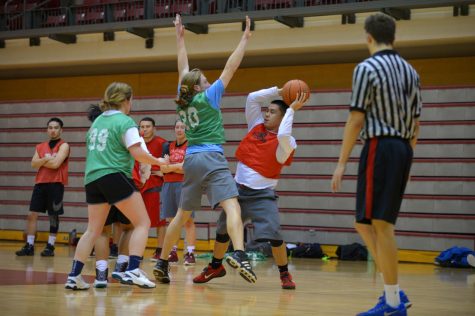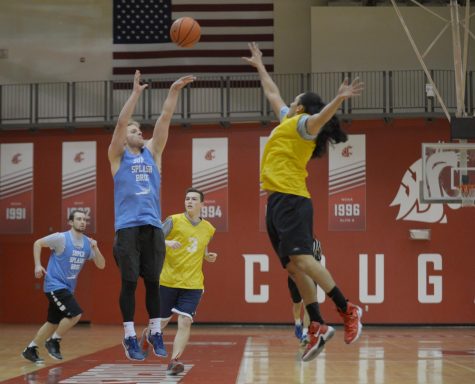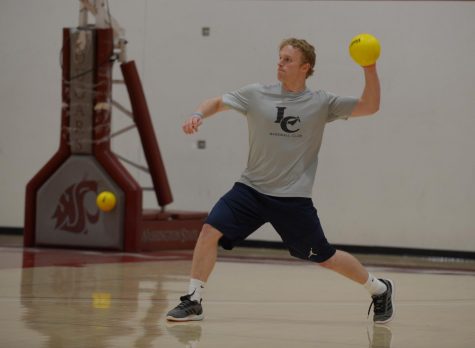Campus resources advise healthy habits
Students are more likely to eat fast food and skip exercise, studies find
July 12, 2017
Staying physically fit may pose a challenge for students who are occupied with classes, jobs and social lives. But it can be done, said Matthew Atwell, coordinator of fitness services and education for University Recreation.
The key to staying fit is making physical health a priority, Atwell said. A lack of time isn’t an excuse to skip the gym.
“You’ve got time,” Atwell said. “It’s gotta be a priority, though. I know there’s studying and social things, but getting a workout in the day doesn’t take two hours — it takes 30 minutes.”
Adults should do two-and-a-half hours per week of intense aerobic activity, according to the Centers for Disease Control and Prevention. Workouts should to be mixed with strength training, making an average session about 30 minutes per day.
Nearly 40 percent of adults reported exercising less than once per week or not at all, according to the American Psychological Association.
This comes at a time when many respondents reported a variety of benefits from exercising in the Stress in America survey. Some common accounts from people include a good feeling about themselves, elevated moods and less stress.
Students can reap these benefits and more, said Tricia Zelaya, assistant director for student development at Purdue University in an article by Purdue Today.
“Going to the gym is so much more than going to the gym,” Zelaya said. “Students who are motivated by fitness and wellness tend to have better time management skills, and research shows that being fit is good for the mind.”
North Carolina State University put this to the test in a study comprised of 20,000 students. Researchers found that for every hour of physical activity per week, grade point averages increased by 0.6 points.
There have been some studies that concluded it is better to work out in the morning, but Atwell said students should focus on the best time for them.
“Work out in a time that’s going to be beneficial for you,” Atwell said. “It is important to have a routine, though.”
Another routine that students are advised to follow is eating healthy, Atwell said.
“One of the fallacies is that ‘I don’t have money to eat well,’ ” Atwell said. “But in reality, the foods that you need to eat, you need to cook yourself — and that is cheaper.”
Students tend to eat fast food more often than the average person, according to GrubHub and Spoon University. The two organizations examined hundreds of schools during the 2013-2014 academic school year.
College students are twice as likely to place an order rather than cook between 10 p.m. and 2 a.m., and students are also 179 percent more likely to order cookies than the average person.
Research found that college students consume a lot of salad — but also a lot of pizza, fries, wings and soup.
One trick to eating healthy is to shop on the perimeters of a grocery store, avoiding the middle, Atwell said. If a product comes in a box, is refined or generally not clean, it’s most likely not healthy, either.
There’s a lot that goes into maintaining physical health, like how often you exercise and what you consume. Confusion can be taken to any of the multiple gym facilities on campus.
“Even if someone walks in and says ‘I don’t know what to do,’ we’re set up for that,” Atwell said. “The main focus of [Chinook] is to have great student service for undergraduate students.”





















